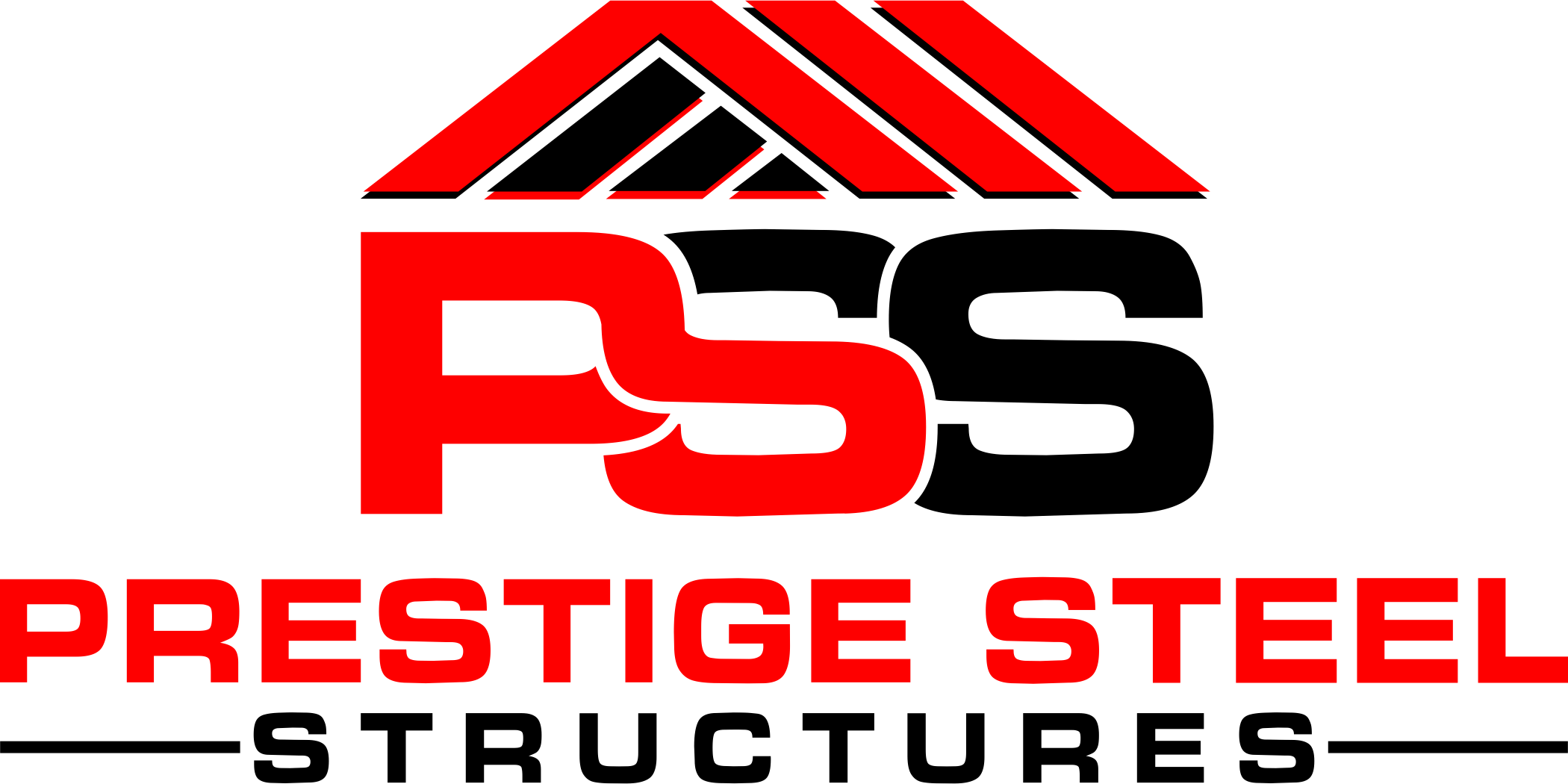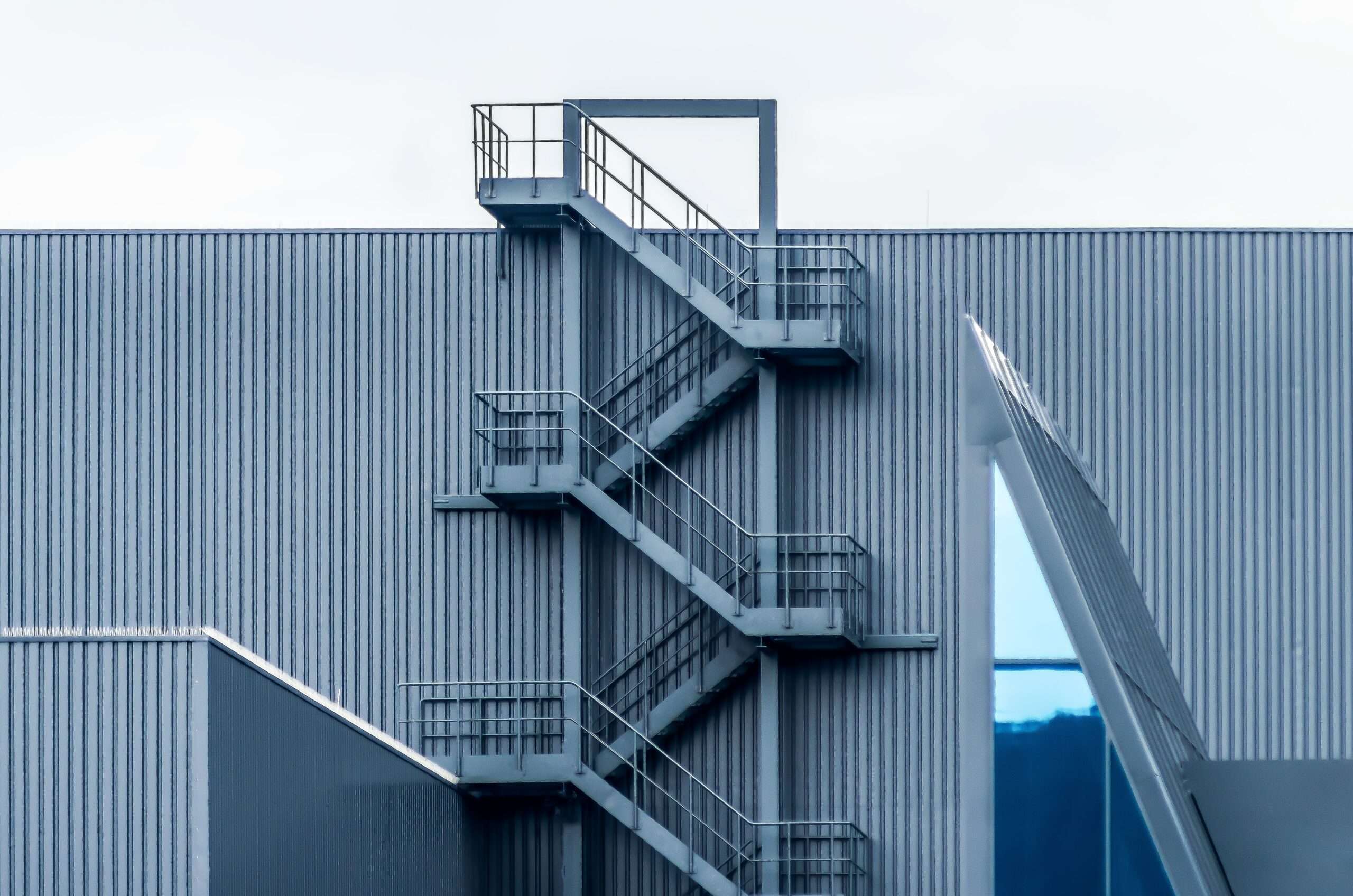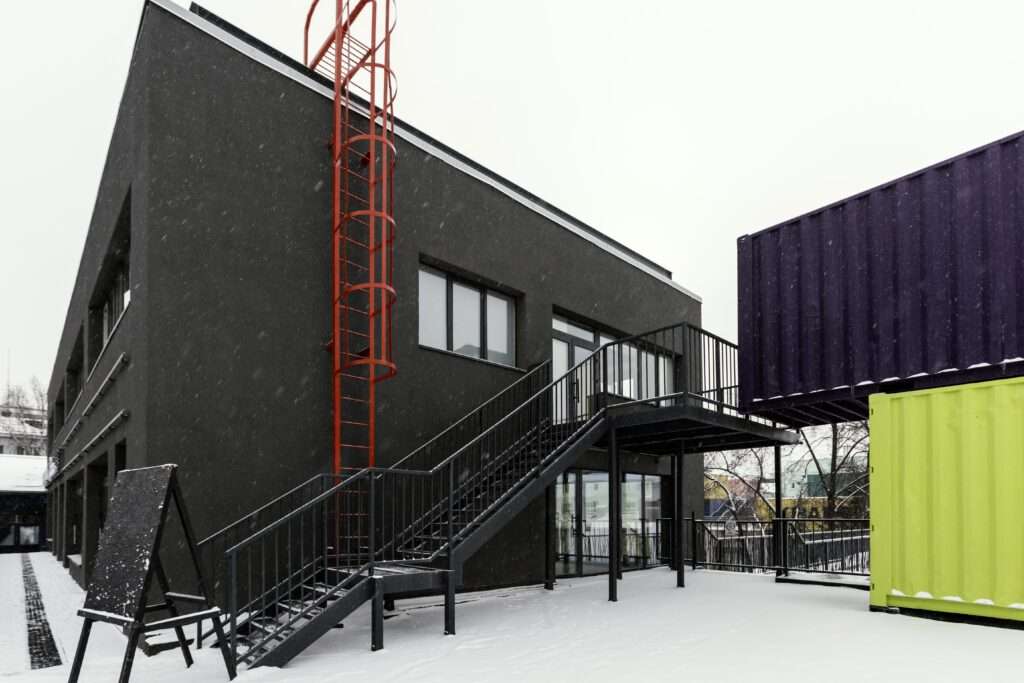Metal buildings have become increasingly popular for various applications due to their unique advantages. This comprehensive outline explores the key reasons why choosing a metal building might be the ideal solution for your needs, considering factors like durability, cost-effectiveness, versatility, and sustainability.
Advantages of Metal Buildings
Durability and Longevity
Metal buildings offer exceptional resistance to various elements and wear, leading to impressive long lifespans. Let’s delve deeper into each point:
Weather Resistance
- Wind: Steel’s high strength-to-weight ratio allows it to withstand strong winds without damage. Pre-engineered structures ensure proper connection points and wind-resistant designs.
- Rain and Snow: Metal roofs shed water effectively, preventing leaks and protecting the interior. Snow load capacity is carefully calculated, preventing roof collapse under heavy snowfall.
- Hail: Unlike other materials like asphalt or wood, metal roofs can typically withstand significant hail impact without denting or breaking.
Immunity to Pests and Insects
- Termites and other insects: Metal is completely inedible and unappealing to insects, eliminating the risk of structural damage and infestations.
- Rodents: The smooth, hard surface of metal makes it difficult for rodents to gnaw or create entry points, reducing potential damage and health concerns.
Fire Resistance and Safety Ratings
- Steel is inherently fire-resistant: It has a high melting point and doesn’t readily contribute to flames. This makes metal buildings safer for various uses, including storage of flammable materials.
- Specific fire ratings: Metal buildings can be designed and constructed to achieve specific fire resistance ratings, meeting stringent safety codes for different applications.
Minimal Susceptibility to Corrosion and Rust
- Galvanized steel: Many metal buildings utilize galvanized steel, which has a zinc coating that provides excellent corrosion resistance, even in humid environments.
- Proper paint and coatings: Additional protective coatings or paint can further enhance corrosion resistance depending on the specific environment and use.
- Minimal maintenance: Compared to other materials like wood, metal requires minimal maintenance to prevent corrosion, saving time and money in the long run.
Long Lifespan and Minimal Depreciation
- Durability translates to longevity: Well-maintained metal buildings can last for decades, sometimes even centuries, with minimal structural degradation.
- Low depreciation: This extended lifespan translates to lower depreciation rates, making metal buildings a valuable long-term investment.
- Reduced replacement costs: Compared to materials with shorter lifespans, metal buildings require less frequent replacement, further reducing overall costs.
Additional Points
- Metal buildings can withstand earthquakes and other natural disasters better than some traditional materials.
- With proper maintenance, the aesthetic appeal of metal buildings can be preserved for long periods.
- The modular nature of some metal buildings allows for easier expansion and reconfiguration compared to other building types.
By considering these advantages, it’s clear that metal buildings offer exceptional durability and longevity, making them a compelling choice for various applications.
Cost-Effectiveness and Efficiency
Competitive Initial Construction Costs
- Compared to traditional materials like brick, concrete, or wood, steel can be more cost-effective. Pre-fabricated metal buildings eliminate the need for on-site bricklaying, concrete pouring, or extensive carpentry, reducing labor costs.
- Standardized components and efficient manufacturing processes further contribute to competitive pricing.
- Consider factors like project size, complexity, and site-specific requirements for an accurate cost comparison.
Lower Long-Term Maintenance Costs
- Metal’s inherent durability leads to minimal maintenance needs compared to other materials. Less frequent painting, sealing, or repairs translate to significant cost savings over the building’s lifespan.
- Resistance to pests, insects, and weather elements further reduces the need for ongoing maintenance interventions.
- The long lifespan itself minimizes replacement costs, contributing to lower overall ownership expenses.
Faster Construction Times, Reducing Labor and Equipment Expenses
- Pre-fabricated components allow for rapid assembly, significantly reducing construction timelines compared to traditional methods. This translates to lower labor costs and faster project completion.
- Lighter-weight materials require less heavy equipment, further reducing costs associated with machinery rental and operation.
- Faster completion means quicker occupancy or operation, potentially generating revenue sooner and offsetting construction costs.
Energy Efficiency with Proper Insulation and Design
- Metal itself conducts heat efficiently, but strategically placed insulation can significantly improve energy performance.
- Reflective metal roofs can minimize heat absorption, reducing cooling costs in hot climates.
- Open floor plans and clear spans in metal buildings allow for efficient airflow and HVAC system design.
- Energy-efficient metal building systems integrate features like skylights, natural ventilation, and daylighting controls to further reduce energy consumption.
Potential for Tax Benefits Depending on Location and Use
- In some regions, tax incentives might exist for using energy-efficient or sustainable building materials like metal.
- Depreciation allowances for commercial buildings can be more favorable for rapidly depreciating assets like traditional construction materials. However, the long lifespan of metal buildings can ultimately result in lower overall depreciation costs.
- Consult with a tax professional to explore potential tax benefits specific to your location and intended use of the metal building.
Versatility and Customization
Wide Range of Prefabricated Designs and Sizes
- From small sheds and garages to large warehouses and industrial facilities, a vast array of pre-engineered designs cater to diverse needs.
- Standard designs can be readily adapted to specific requirements, minimizing design and engineering costs.
- Online design tools and configurators allow for easy visualization and customization of pre-fabricated options.
Flexibility for Customization to Specific Needs and Preferences
- Beyond pre-engineered options, metal buildings offer extensive customization possibilities.
- Variations in roof styles, wall heights, door and window placements, and interior layouts can accommodate unique needs and preferences.
- Integration of mezzanines, partitions, and other interior elements provides further flexibility for functional optimization.
Modular Construction Allows for Expansion and Reconfiguration
- Many metal buildings utilize modular construction, where prefabricated sections are bolted together.
- This modularity allows for future expansion by adding additional modules as needed.
- Reconfiguration of existing modules is also possible, adapting the building to changing needs or uses.
- Modular construction offers versatility and adaptability that traditional on-site construction often lacks.
Adaptability to Various Uses (Residential, Commercial, Industrial, Agricultural)
- Metal buildings are not limited to industrial applications. Their versatility adapts them to various uses, including:
- Residential: Homes, garages, workshops, sheds, barns.
- Commercial: Retail stores, office buildings, restaurants, warehouses, storage facilities.
- Industrial: Manufacturing facilities, workshops, power plants.
- Agricultural: Storage buildings, greenhouses, livestock shelters.
Aesthetic Options with Different Colors, Finishes, and Architectural Elements
- Metal buildings don’t have to be plain and industrial-looking.
- A variety of color options and finishes allows for customization to match existing structures or personal preferences.
- Integration of architectural elements like exposed beams, canopies, or decorative cladding can enhance the aesthetic appeal.
- With proper design and planning, metal buildings can achieve a modern, attractive, and visually appealing look.
Remember, these are just general points. When considering specific project needs, consult with experienced professionals to explore the detailed cost-effectiveness, efficiency, versatility, and customization options available with metal buildings.
Sustainability and Environmental Benefits
Recyclability of Steel, Minimizing Waste and Environmental Impact
- Steel is one of the most recyclable materials globally, with a recycling rate exceeding 80%. After a metal building reaches its end-of-life, the steel can be easily disassembled and recycled into new construction materials, significantly reducing waste and conserving natural resources.
- This closed-loop approach minimizes the need for virgin steel production, which can be energy- and resource-heavy.
Reduced Energy Consumption During Construction and Use
- Pre-fabrication allows for efficient production and minimizes construction waste, reducing embodied energy associated with materials and transportation.
- The lightweight nature of steel requires less energy for transportation and on-site construction compared to heavier materials like concrete.
- Metal buildings have inherent thermal properties that can aid in energy efficiency. Insulated metal roofs and walls can significantly reduce heating and cooling requirements, leading to lower energy consumption throughout the building’s life.
- Open floor plans and clear spans in metal buildings facilitate efficient air circulation and HVAC system design, further reducing energy needs.
Durable Materials Contributing to Longer Building Lifespans
- Unlike materials like wood or concrete, steel is resistant to decay, rot, and insect damage, leading to longer building lifespans. This reduces the need for frequent replacement and associated environmental impacts of material extraction, production, and construction.
- The extended life cycle of metal buildings translates to a lower environmental footprint per year of use compared to buildings with shorter lifespans that require more frequent reconstruction.
Potential for Incorporating Green Features Like Solar Panels or Rainwater Harvesting
- Metal roofs provide an excellent platform for installing solar panels to generate clean, renewable energy for the building’s operation.
- Rainwater harvesting systems can be integrated into metal buildings to collect and store rainwater for irrigation, toilet flushing, or other non-potable uses, reducing reliance on municipal water supplies.
- These green features contribute to overall sustainability and lower the building’s environmental impact throughout its lifecycle.
Sustainable Forestry Practices for Wood Components Used in Some Cases
- While metal makes up the primary structure, some metal buildings incorporate certified wood for interior finishes, doors, or trim.
- Utilizing wood from sustainably managed forests ensures responsible resource utilization and minimizes deforestation.
- Look for certifications like FSC (Forest Stewardship Council) or PEFC (Programme for the Endorsement of Forest Certification) to ensure the wood components come from responsible sources.
Additional Considerations
- The specific environmental benefits of metal buildings can vary depending on factors like:
- The source and production processes of the steel used.
- The transportation distances involved in material delivery and construction.
- The energy efficiency measures incorporated into the design and construction.
- The building’s intended use and expected lifetime.
Additional Advantages
Superior Soundproofing Properties
- Steel and pre-engineered panels provide excellent sound insulation compared to lighter materials like wood or drywall.
- This can be advantageous for buildings requiring noise control, such as music studios, workshops, or industrial facilities.
- Additional insulation and soundproofing materials can further enhance noise reduction for specific needs.
Easy Maintenance and Cleaning
- The smooth, non-porous surfaces of metal are easy to clean and maintain.
- They are resistant to mold, mildew, and dust mites, contributing to better indoor air quality.
- Metal roofs require minimal maintenance compared to other roofing materials, reducing long-term upkeep costs.
Disaster Resistance in Areas Prone to Earthquakes, Hurricanes, or Floods
- The strong and flexible nature of steel makes metal buildings well-suited for areas prone to natural disasters.
- They can withstand high winds, heavy snow loads, and seismic activity better than some traditional construction methods.
- Proper anchoring and design considerations are crucial for maximizing disaster resistance.
Potential for Higher Resale Value Due to Durability and Low Maintenance
- The long lifespans, low maintenance requirements, and inherent durability of metal buildings can contribute to higher resale value compared to buildings constructed with less durable materials.
- Potential buyers appreciate the reduced risk of future repairs and replacement costs associated with metal buildings.
Remember, these additional advantages further solidify the case for metal buildings as a compelling choice for various applications. When coupled with the sustainability benefits, cost-effectiveness, and adaptability discussed earlier, metal buildings offer a strong value proposition for projects seeking durability, efficiency, and environmental responsibility.
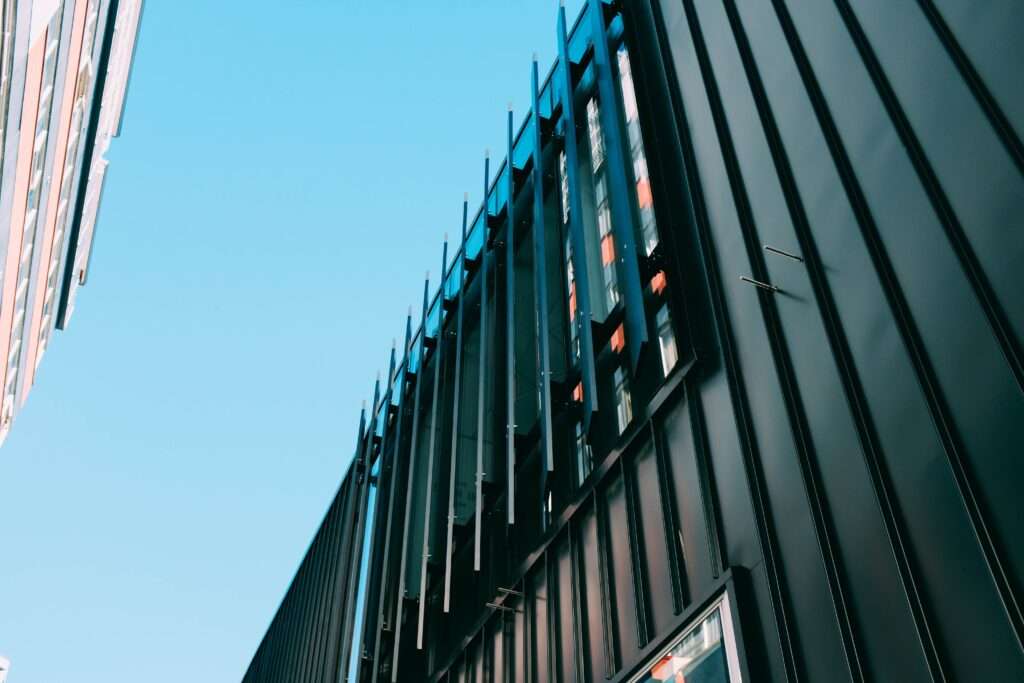
Applications and Use Cases
Residential Buildings
Homes
- Single-family homes: Metal buildings can be designed and constructed to meet various architectural styles and preferences, offering a modern and durable alternative to traditional wood-frame construction.
- Barndominiums: Combining residential living space with agricultural utility, barndominiums utilize metal structures with living quarters, workshops, or storage areas integrated into the design.
- Prefabricated cabins and tiny homes: The lightweight and modular nature of metal makes it ideal for prefabricated residential structures, offering quick construction times and efficient use of space.
Garages, Sheds, and Workshops
- Metal garages: Offering superior durability and weather resistance compared to wood or vinyl, metal garages are ideal for protecting vehicles, equipment, and storage.
- Metal sheds: Versatile and customizable, metal sheds provide secure storage for lawn equipment, tools, gardening supplies, or other outdoor essentials.
- Metal workshops: Offering ample space and flexibility, metal workshops are perfect for hobbies, crafts, woodworking, or small-scale manufacturing.
Commercial Buildings
Warehouses, Storage Facilities, and Distribution Centers
- Pre-engineered metal buildings: Offering large, open floor plans and clear spans, these are ideal for efficient storage and distribution operations.
- Refrigerated warehouses: Insulated metal buildings with specialized cooling systems are perfect for storing perishable goods or temperature-sensitive products.
- Distribution centers: Strategically located facilities with efficient loading and unloading bays, often utilizing metal construction for their durability and scalability.
Retail Stores, Offices, and Restaurants
- Metal retail stores: Modern and customizable, metal buildings can be adapted to various retail concepts, offering large open spaces or flexible layouts with interior partitions.
- Metal office buildings: Featuring efficient layouts and open floor plans, metal buildings can be designed with modern aesthetics and energy-efficient features for comfortable work environments.
- Metal restaurants: Offering a unique and spacious dining experience, metal buildings can be customized with exposed beams, skylights, and other design elements to create an inviting atmosphere.
- Agricultural buildings: Metal structures are widely used for agricultural applications such as barns, greenhouses, livestock shelters, and storage facilities, offering durability and resistance to harsh weather conditions.
Industrial Buildings
Manufacturing Facilities and Factories
- Large-scale production facilities: Metal buildings offer the flexibility and adaptability needed for industrial operations, accommodating heavy machinery, specialized equipment, and efficient production lines.
- Assembly plants: Clear spans and open floor plans facilitate efficient assembly lines and production processes within metal structures.
- Research and development facilities: Metal buildings can be adapted to create flexible and adaptable spaces for research labs, testing facilities, and prototype development.
Power Plants and Oil & Gas Facilities
- Power plants: Engineered for specific load requirements and environmental considerations, metal buildings can house power generation equipment and associated infrastructure.
- Oil & Gas facilities: Durable and weather-resistant, metal buildings are utilized for storage tanks, processing facilities, and other critical infrastructure in the oil and gas industry.
Additional Considerations
- This list is not exhaustive, and the adaptability of metal buildings allows for countless other applications in various industries.
- Zoning regulations and building codes may have specific requirements for different uses and locations.
- Consulting with architects, engineers, and experienced metal building manufacturers is crucial for designing and constructing a building that meets specific needs and complies with regulations.
By understanding the diverse applications and use cases, you can gain a deeper appreciation for the versatility and potential of metal buildings across various industries and sectors.
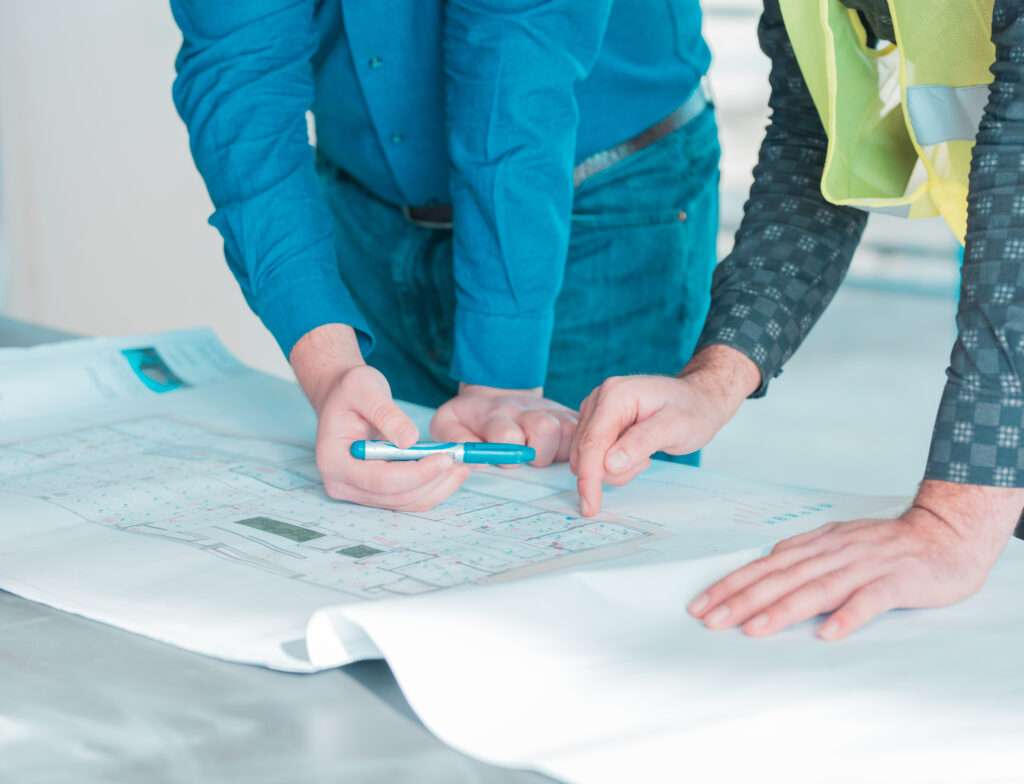
Considerations and Challenges
While metal buildings offer numerous advantages, it’s essential to be aware of potential challenges and considerations before making a decision.
Initial Cost Comparison with Other Materials
- While pre-engineered metal buildings can be competitive in overall project costs, comparing initial upfront costs directly with traditional materials like wood or concrete can be misleading.
- Factor in long-term costs like maintenance, durability, and potential resale value to get a more accurate picture.
- Consider additional costs like site preparation, foundation work, permitting fees, and any required customization features.
Potential Zoning Regulations and Permitting Requirements
- Zoning regulations in your area might have specific requirements for metal buildings regarding size, setbacks, aesthetics, or permitted uses.
- Obtain necessary permits before construction and ensure your design complies with local regulations.
- Proactively engage with building officials to anticipate and address any potential zoning challenges early on.
Importance of Choosing Qualified Manufacturers and Builders
- The quality and experience of your chosen manufacturer and builder significantly impact the final outcome and long-term performance of your metal building.
- Look for reputable companies with a proven track record of quality construction and customer satisfaction.
- Verify licensing, insurance, and certifications to ensure compliance with industry standards and safety regulations.
- Obtain multiple quotes and compare details like materials, warranties, and construction specifications before making a decision.
Insulation Needs for Climate Control and Energy Efficiency
- While metal conducts heat efficiently, proper insulation is crucial for maintaining comfortable temperatures and optimizing energy performance.
- Consider factors like climate, intended use, and desired energy efficiency levels when choosing insulation materials and thicknesses.
- Consult with energy professionals or experienced metal building specialists to ensure proper insulation design and installation.
- Additional energy-saving features like reflective roofs, skylights, and natural ventilation can further enhance efficiency.
Architectural Considerations for Aesthetics and Functionality
- Metal buildings offer flexibility for customization, but achieving desired aesthetics and functionality requires careful planning.
- Collaborate with architects and designers to ensure the building integrates seamlessly with its surroundings and fulfills its intended use.
- Consider factors like roof styles, wall finishes, color options, and integration of architectural elements like beams, canopies, or cladding.
- Remember that functionality should be prioritized without compromising aesthetics, ensuring the building meets your specific needs and preferences.
Additional Considerations
- Site access and logistics: Ensure accessibility for delivery of materials and equipment during construction.
- Foundation requirements: The type of foundation needed depends on soil conditions, building size, and local regulations.
- Future expansion: Consider potential future needs and choose a design that allows for easy expansion or reconfiguration if needed.
- Maintenance and repairs: Develop a maintenance plan and identify reliable service providers for future upkeep and repairs.
By carefully considering these challenges and proactively addressing them, you can ensure your metal building project is a success, delivering long-term value, functionality, and satisfaction. Remember, thorough research, collaboration with qualified professionals, and informed decision-making are key to navigating these considerations and making the most of the numerous benefits that metal buildings offer.
Conclusion
As we journey through this comprehensive exploration of metal buildings, it’s time to culminate our understanding and solidify the compelling reasons why this innovative building solution deserves serious consideration.
A Symphony of Benefits
Let’s orchestrate a recap of the key advantages that resonate throughout this analysis:
- Durability and Longevity: Imagine a building that stands strong against time, weathering the elements with minimal deterioration. Metal’s inherent resilience translates to extended lifespans, minimizing replacement costs and ensuring a sound investment.
- Cost-Effectiveness and Efficiency: While initial cost comparisons might require deeper analysis, considering long-term factors like low maintenance, faster construction, and energy efficiency paints a clearer picture. Metal buildings offer a symphony of cost-saving benefits.
- Versatility and Customization: No matter your vision, a metal building can adapt. From residential havens to industrial giants, the modularity and adaptability of these structures cater to diverse needs and preferences, offering a customized melody for each project.
- Sustainability and Environmental Responsibility: By choosing metal, you embrace a material boasting high recyclability, reduced energy consumption, and durable lifespans, minimizing your environmental footprint and harmonizing with sustainable practices.
- Additional Advantages: Explore the bonus features! Superior soundproofing, easy maintenance, disaster resistance, and potential for higher resale value paint a compelling portrait of a building solution that offers comprehensive advantages.
A Universe of Applications
Remember, this is not just a list of benefits; it’s an invitation to envision possibilities. From homes and workshops to warehouses and manufacturing facilities, the vast universe of applications stretches across industries and sectors. Whether you seek a cozy residential retreat or a sprawling industrial powerhouse, a metal building can be the foundation for your dreams.
The Next Step: Your Informed Decision
This exploration is just the beginning. To unlock the full potential of metal buildings for your specific needs, we encourage you to:
- Conduct further research: Delve deeper into specific aspects that resonate with your project. Explore case studies, manufacturer websites, and industry publications to gain in-depth insights.
- Seek professional guidance: Consult with architects, engineers, and experienced metal building specialists. Their expertise can translate your vision into a tailored solution, addressing challenges and maximizing benefits.
- Ask questions, and explore options: Don’t hesitate to inquire, compare quotes, and explore various design possibilities. Remember, this is a collaborative journey towards building your dream.
The decision to choose a metal building is not just about selecting a material; it’s an embrace of durability, efficiency, adaptability, and environmental responsibility. With informed research, collaboration with professionals, and a clear understanding of your needs, you can unlock the unique potential of metal buildings and transform your vision into a reality that resonates with success.

